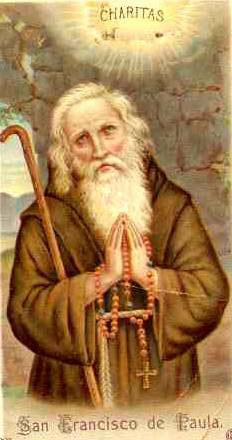 Dear readers, Catholic Online was de-platformed by Shopify for our pro-life beliefs. They shut down our Catholic Online, Catholic Online School, Prayer Candles, and Catholic Online Learning Resources essential faith tools serving over 1.4 million students and millions of families worldwide. Our founders, now in their 70's, just gave their entire life savings to protect this mission. But fewer than 2% of readers donate. If everyone gave just $5, the cost of a coffee, we could rebuild stronger and keep Catholic education free for all. Stand with us in faith. Thank you. Help Now >
Dear readers, Catholic Online was de-platformed by Shopify for our pro-life beliefs. They shut down our Catholic Online, Catholic Online School, Prayer Candles, and Catholic Online Learning Resources essential faith tools serving over 1.4 million students and millions of families worldwide. Our founders, now in their 70's, just gave their entire life savings to protect this mission. But fewer than 2% of readers donate. If everyone gave just $5, the cost of a coffee, we could rebuild stronger and keep Catholic education free for all. Stand with us in faith. Thank you. Help Now >
Tenebrae Hearse
FREE Catholic Classes
The Tenebræ Hearse is the triangular candlestick used in the Tenebræ service. The name is derived, through the French herse , from the Latin herpex , which means a harrow, and is the same as that now used in connection with funeral processions. The funeral hearse was originally a wooden or metal framework, which stood over the bier or coffin and supported the pall. It was provided with numerous prickets to hold burning tapers, and, owing to the resemblance of these prickets to the spikes or teeth of a harrow, was called a hearse . Later on, the word was applied, not only to the construction above the coffin, but to any receptacle in which the coffin was placed. Thus it came to denote the vehicle in which the dead are carried to the grave. Likewise in the case of the Tenebræ hearse, the term was employed because the prickets were supposed to resemble the teeth of a harrow. The triangular candlestick for the Tenebræ dates back at least as far as the seventh century, being mentioned in an ordo of that period published by Mabillon. The number of candles, however, has varied at different times and in different places. Thus Amalarius of Metz speaks of a hearse of twenty-four candles ; other references show that hearses of thirty, twelve, nine, and even seven candles were used. At the present day, the Tenebræ hearse is made to bear fifteen candles, all of which, according to the "Caeremoniale Episcoporum" (II, xxii, 4), should be of unbleached wax, though in some churches a white candle is used on the apex of the triangle. During the service, these candles are gradually extinguished, one at the end of each psalm, alternately on either side of the candlestick, beginning with the lowest. Since there are nine psalms in the Matins and five in the Lauds, only the highest candle of the triangle is left burning after the psalms have all been sung. As each of the last six verses of the Benedictus is chanted, one of the six candles on the altar, also of unbleached wax, is extinguished. Likewise, all other lights in the church are put out, except the candle on the summit of the triangle. This candle is then taken from its place, and hidden behind the altar, to be brought forth again, still lighted, at the conclusion of the service. The symbolism of the Tenebræ hearse and its candles is variously explained. The triangle itself is said to be a symbol of the Blessed Trinity ; according to some the highest candle represents Christ, while the other fourteen represent the eleven Apostles and the three Maries; again we are told that the centre candle is a type of the Blessed Virgin, who alone believed in the Resurrection, while the gradual extinction of the others symbolizes the waning faith of the Apostles and Disciples. (See TENEBRAE.)
Join the Movement
When you sign up below, you don't just join an email list - you're joining an entire movement for Free world class Catholic education.

-

- Stations of the Cross
- Easter / Lent
- 5 Lenten Prayers
- Ash Wednesday
- Living Lent
- 7 Morning Prayers
- Mysteries of the Rosary
- Litany of the Bl. Virgin Mary
- Popular Saints
- Popular Prayers
- Female Saints
- Saint Feast Days by Month
- Pray the Rosary
Pope Francis’ April Prayer Intention: Using Technology to Strengthen Human Connections
Finding Peace Through Prayer in a World of Worry
Trump Administration Withholds Federal Grants from Planned Parenthood Over DEI and Civil Rights Concerns
Daily Catholic
 Daily Readings for Wednesday, April 02, 2025
Daily Readings for Wednesday, April 02, 2025 St. Francis of Paola: Saint of the Day for Wednesday, April 02, 2025
St. Francis of Paola: Saint of the Day for Wednesday, April 02, 2025 Prayer for God's Help in Daily Actions: Prayer of the Day for Friday, March 14, 2025
Prayer for God's Help in Daily Actions: Prayer of the Day for Friday, March 14, 2025 Daily Readings for Tuesday, April 01, 2025
Daily Readings for Tuesday, April 01, 2025 St. Hugh of Grenoble: Saint of the Day for Tuesday, April 01, 2025
St. Hugh of Grenoble: Saint of the Day for Tuesday, April 01, 2025- To Perceive Animals as God's Gifts: Prayer of the Day for Thursday, March 13, 2025
![]()
Copyright 2025 Catholic Online. All materials contained on this site, whether written, audible or visual are the exclusive property of Catholic Online and are protected under U.S. and International copyright laws, © Copyright 2025 Catholic Online. Any unauthorized use, without prior written consent of Catholic Online is strictly forbidden and prohibited.
Catholic Online is a Project of Your Catholic Voice Foundation, a Not-for-Profit Corporation. Your Catholic Voice Foundation has been granted a recognition of tax exemption under Section 501(c)(3) of the Internal Revenue Code. Federal Tax Identification Number: 81-0596847. Your gift is tax-deductible as allowed by law.


 Daily Readings for Wednesday, April 02, 2025
Daily Readings for Wednesday, April 02, 2025 St. Francis of Paola: Saint of the Day for Wednesday, April 02, 2025
St. Francis of Paola: Saint of the Day for Wednesday, April 02, 2025 Prayer for God's Help in Daily Actions: Prayer of the Day for Friday, March 14, 2025
Prayer for God's Help in Daily Actions: Prayer of the Day for Friday, March 14, 2025 St. Hugh of Grenoble: Saint of the Day for Tuesday, April 01, 2025
St. Hugh of Grenoble: Saint of the Day for Tuesday, April 01, 2025

